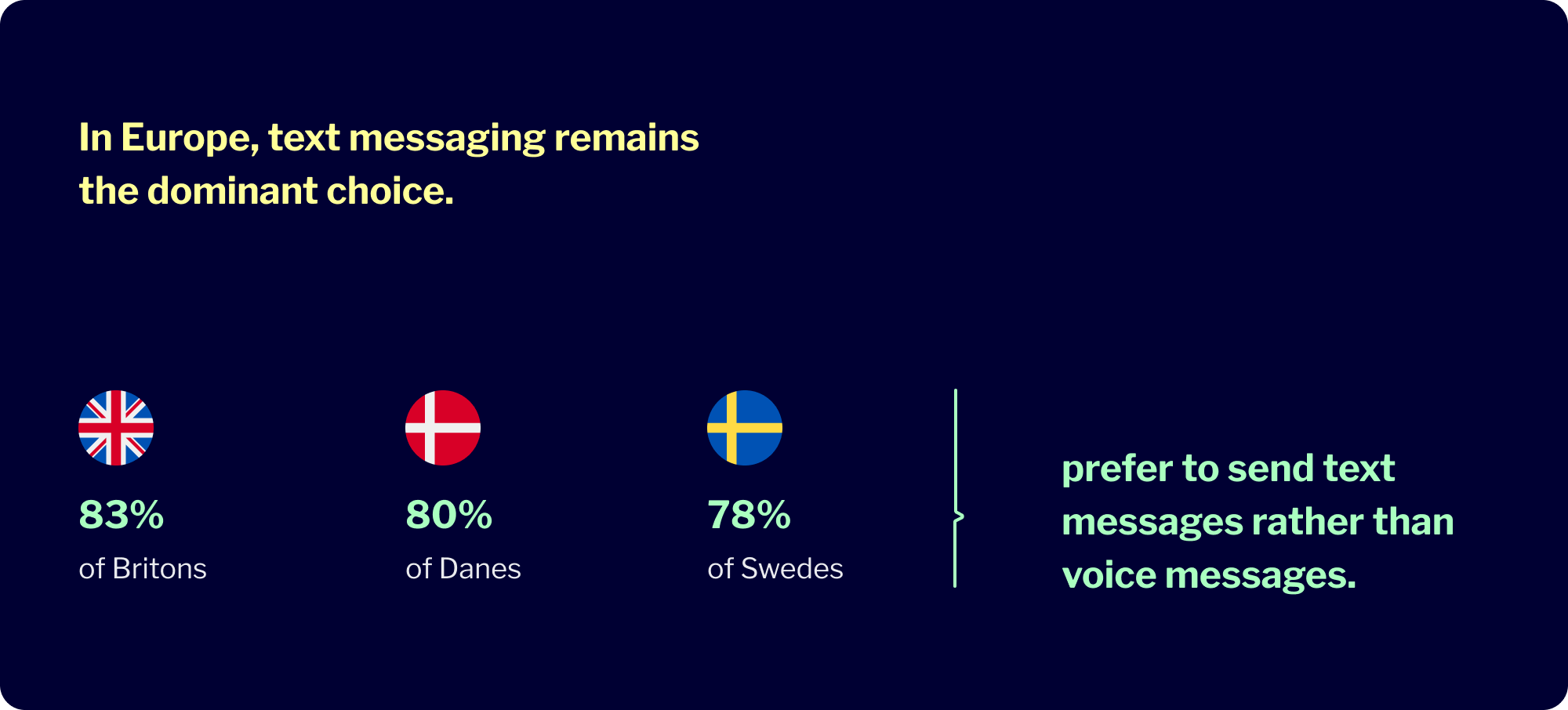Voice messaging has become a powerful tool in conversational marketing. With the increasing popularity of voice assistants like Google Assistant, Siri, and Alexa, businesses are beginning to explore how voice-based communication can enhance customer interactions.
The Rise of Voice Messaging
Consumers are growing more comfortable using voice technology, whether through smart speakers, mobile devices, or in-app voice notes. The convenience of speaking rather than typing makes it a natural evolution for messaging platforms. This shift is driven by advancements in AI and voice recognition, allowing users to communicate more efficiently than ever before.
Consumers are growing more comfortable using voice technology, whether through smart speakers, mobile devices, or in-app voice notes. The convenience of speaking rather than typing makes it a natural evolution for messaging platforms. This shift is driven by advancements in AI and voice recognition, allowing users to communicate more efficiently than ever before.
Recent surveys highlight just how much voice messaging is becoming a mainstream communication method. A global consumer survey conducted in November 2023 found that 7% of respondents prefer sending and receiving audio messages over text. Additionally, 21% reported liking both equally when sending messages, while 27% said they liked both equally when receiving them.
In the United States, voice messaging adoption is even more pronounced. A 2023 survey by Vox revealed that 62% of Americans have sent a voice message at some point, with nearly 30% using voice messages on a weekly, daily, or even multiple-times-per-day basis. Among younger demographics, usage is even higher. 43% of respondents aged 18 to 29 reported using voice messages at least once a week.

However, according to a study from 2024, preferences vary significantly across different regions. In Europe, text messaging remains the dominant choice, with 83% of Britons, 80% of Danes, and 78% of Swedes preferring to send text messages rather than voice messages. The preference for receiving messages also skews heavily towards text, with 77% of both Britons and Danes saying they prefer receiving texts over audio.
In Asia, a similar trend exists in some regions, with 67% of Singaporeans favouring text over voice messages. However, the picture shifts in the Middle East, where consumers in the UAE are the least likely to prefer text messages alone. Only a third of UAE consumers say they prefer receiving texts, while 17% favour audio messages, and a notable 46% say they like both formats equally.
A similar preference for a balanced approach is found in Hong Kong, where 46% of consumers enjoy receiving both text and audio messages equally. In India, 40% of respondents share the same sentiment.
These trends indicate that while voice messaging is gaining traction, its adoption depends heavily on cultural and regional preferences. For businesses looking to implement conversational messaging strategies, understanding these preferences will be key to effectively engaging different markets.
Practical Use Cases for Voice Messaging in Marketing
As voice messaging becomes a preferred communication tool for many consumers, businesses are finding innovative ways to integrate it into their marketing strategies. From enhancing customer support to creating personalised engagement, voice messaging is proving to be a powerful asset in building stronger relationships with customers. Here are some of the most effective ways brands can use voice messaging to drive engagement and improve customer experiences.
Personalised customer engagement
Voice messages allow brands to create a more personal connection with their customers. Unlike text, voice conveys emotion, tone, and personality, making it ideal for personalised outreach. Businesses can use voice messaging to send customised offers, birthday greetings, or thank-you messages to customers, making interactions feel more human and engaging.
Interactive marketing campaigns
Voice messaging enables businesses to create interactive marketing campaigns that encourage direct customer engagement. Brands can invite customers to participate in voice-based contests, share testimonials via voice messages, or provide feedback in an audio format. These campaigns not only boost engagement but also provide valuable user-generated content that can be repurposed for marketing efforts.
Conversational commerce and sales assistance
E-commerce brands and online retailers are increasingly integrating voice messaging into their sales process. Customers can enquire about products, ask for recommendations, or even place orders using voice messages. AI-powered voice assistants can further enhance this experience by providing instant responses and guiding users through their purchasing journey.
Appointment reminders and follow-ups
Businesses in healthcare, beauty, and service industries can use voice messages to send appointment reminders, follow-up messages, and personalised check-ins. A voice reminder from a doctor’s office, a salon, or a personal trainer adds a warm and human touch, making it more effective than a generic text notification. This not only improves customer satisfaction but also reduces no-shows and missed appointments.
Voice Messaging Is a Game-Changer for Marketers
As voice messaging continues to gain traction, its potential in marketing will only expand. Brands that embrace this technology and adapt their strategies accordingly will be better positioned to engage customers in more natural, effective, and meaningful ways.